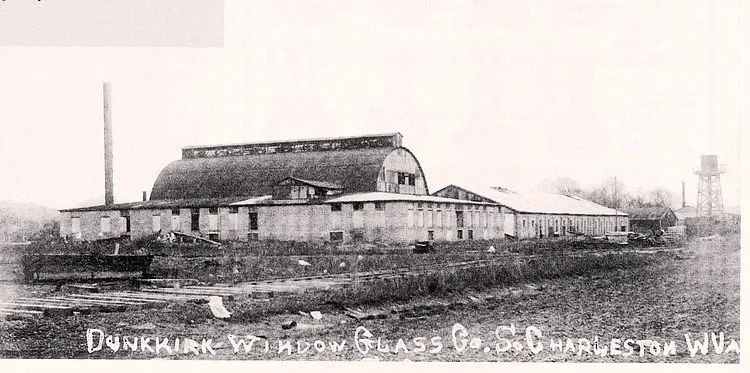Handmade Heritage: A Brief History of American Mold-Blown Glass
Glassblowing has an extensive history steeped in American tradition, but the handmade industry has changed a lot in its production methods and ability to survive over the years. The following is a brief overview of some of the American history of mold-blown glass and its impact on glass manufacturing and production.
Glassblowing was one of the first industries in the American settlement of Jamestown, Virginia. As the United States’ industrial processes expanded, production glassmaking pioneered many innovations – among the most important of which was the invention of Pyrex glass in Corning, New York. Glass making followed the evolution of American industries and was most prominent in states where natural resources and raw materials were abundant, such as quartz-silica, limestone, caustic soda, borax, coal and natural gas. The states of New York, New Jersey, Pennsylvania, Virginia, and West Virginia were early centers of glass making.
Additionally, iron ore and cast iron became important to all industries, especially production glassblowing. Cast iron blow-molds could produce thousands of the same glass forms before the end of its lifecycle. As industries moved westward, Ohio and Indiana became strategically important to the industry. In 1886, the discovery of a large gas well near Kokomo, Indiana combined with the recent construction of iron and steel mills in Muncie, Indiana expanded the mechanization of glass production in America.
Ball Brothers Glass Manufacturing Company Logo
The Ball Brothers glass manufacturing company –known today as the Ball Corporation famous for their glass mason jar production– took advantage of the large gas well located in Indiana and moved their factory to Muncie in 1887 from their previous location in East Buffalo, New York.
(Image Credit: Ball Corporation, “Our History,” https://www.ball.com/our-company/our-story/history-timeline)
Firms such as the Indiana Glass Co, Ball Brothers, Harper and Cruzen, Lippencott, Port, Dunkirk, and Depauw produced both blown and sheet glass in addition to decorative art glass products. This includes practical products such as glass jars and bottles, architectural and window glass, and decorative art glass such as lamp shades, vases, bowls, and plates.
Mechanization did not impact the glass industry as much as the rest of American industry production, as skilled glass blowers understood such characteristics as density, surface tension and viscosity, and could control changes in the molten glass more easily than a machine. However, by the end of the 20th century, many hand-blown and pressed glass factories in the United States had succumbed to economic failure not by mechanization, but largely due to cheap glass produced offshore from foreign markets.
Dunkirk Window Glass Co., S. Charleston, WVA
Dunkirk Glass Company was one of the first companies to relocate to South Charleston for its fine resources that it provided, originating from St. Louis, MO. In 1907 Dunkirk established a factory and devoted its plant to the production of pressed and blown decorative glass.
(Image Credit: The Clio, “Dunkirk Glass Company,” https://theclio.com/entry/58644)
Subsequently, as factories defaulted and their cast iron mold resources were put up for auction, the remaining factories would often purchase and consolidate molds from other factories into their production lines. Two of these factories – Fenton Glass in Williamstown, West Virginia and Southwest Glass in Fort Smith, Arizona – were known to Dierk Van Keppel, the founder of Silica Studio, to have vast inventories of cast iron molds. Valuing the historic and aesthetic value that these cast iron molds hold in American decorative glass history, Dierk Van Keppel made the decision to salvage as many cast iron molds as possible.
Fenton Art Glass Factory Closure
Williamstown, West Virginia
Closed permanently in 2011 after operating for over 100 years, the closure of the glassblowing company put a vast inventory of one-of-a-kind historic glass blow molds at risk of being smelted and reused for their cast iron material.
(Image Credit: Photo by Wayne Towner. The Parkersburg News and Sentinel, “Former Fenton Art Glass workers say last farewell to Williamstown factory”)
Soon after acquiring the molds, Silica Studio was founded in 2019 to repurpose these decorative blown glass molds into readymade lighting solutions. Today Silica has amassed over 250 glass molds from factories that no longer exist. In an ever-expanding global market where off-shore glass producers plagiarize American designers and reproduce cheap versions en masse, the opportunity to utilize these precious artifacts from a disappearing industry is at the heart of Silica Studio.
We are a custom glass lighting company that utilizes historic cast-iron molds to create signature pendants, custom canopies, and art glass installations.
Established in 2019, Silica Studio was founded with a commitment to preserving the tradition of American glassblowing and producing quality glass products by repurposing glass molds into pendant lighting products for interior design, architectural, and historical renovation projects.





